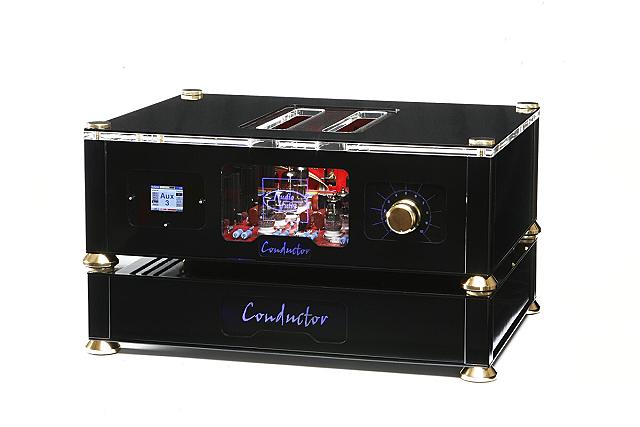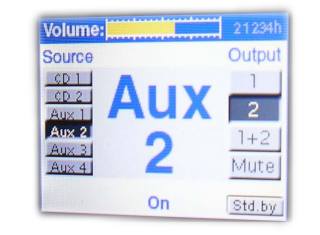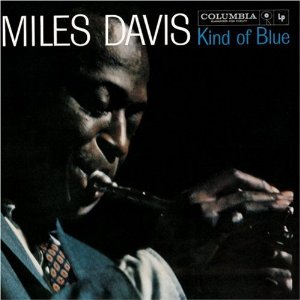Audio Valve Conductor Preamplifier
| Audio Valve Conductor Preamplifier |
| Taking the baton and running the show |
|
|
|
June 2010 |

The maestro has entered the building
Periodically, I like to get around to some of the area audiophile salons and hang out with the pals and see what’s going on, locally, in terms of who’s carrying what lines. On this particular weekend I found myself visiting Mike Kay, the Audio Archon, checking out the latest and greatest from Martin-Logan. He also mentioned something to me about the Audio Valve Conductor being on display and operating in his reference system. I felt that this would be worth the hour long drive out to Mike Kay’s, especially after my experience with the Audio Valve Eklipse a year earlier. Now, don’t get me wrong. I’m really enjoying the demo Mike is putting on with the Martin-Logan CLX’s, but I’m really studying the Conductor intently. After a couple of hours of listening to different system configurations, and not being able to hold back any longer, I broach the subject of an Audio Valve Conductor review. Mike seems keen to having the Conductor reviewed and promises to follow up with Ray Lombardi the upcoming week to make sure everything is a go and let me know when we can get the ball rolling. I hear back from Mike the following week and we make plans for me to pick the Conductor up from him.
Getting to know the Conductor
The Conductor is a class-A vacuum tube preamp that uses eight tubes in its circuit. Four of the tubes are 6922s while the other four tubes are 6H30s. The very first thing you notice about the Conductor is how big it it is. Not in terms of its height or depth, but its width. Both the preamplifier and the power supply are 20” wide and 14.8” deep. The preamp is 5.5” tall and the power supply’s height is 3.1”. You need to make sure you have extra wide shelf space in your equipment stand otherwise you’ll be placing these two boxes on the top shelf. The combined weight for the preamp and power supply is at 55lbs. That’s pretty substantial for a preamplifier so care should be taken where you place it. The weight of the Conductor’s power supply can rival that of many medium sized amplifiers and with its 100K microfarads of capacitance, would rival the output power of a lot of amplifiers as well. With the preamplifier and power supply having similar dimensions most users will have a propensity towards stacking the units on top of each other. The corner posts for each unit are covered with a felt like material which allows you to slide the two pieces around without scuffing up your equipment rack shelves. This is a particularly nice touch but also raises a caveat here. If you stack the two units, one on top of the other, the felt under the corner posts can cause the unit being placed on top to slide off. Be very, very careful of this as it almost happened to me a couple of times and even though the preamp and power supply are very solidly built,, I have a feeling that being dropped from the top of an equipment rack is not what the preamplifier section was designed for. I would even go so far as to recommend to the manufacturer to put anti-skid pads on the bottom of the preamplifier corner posts so there won’t be any concern about it accidentally sliding off from on top of the power supply. The other side of that is that the power supply cable is at least six feet long and you are by no means limited to placing the preamplifier on top of the power supply. I find it to be a nice touch to be able to separate the two as there will surely be some installations that will require the two to be separated.
 One of the features that’s readily apparent, and is pretty cool to look at, is the 2.1” “Micro Controller Display” window which, among other things, allows you to, watch the warm-up phase the Conductor is in when warming up, select the source mode and output mode, mute mode, standby mode, has an analog volume bar graph, allows you to set the volume for individual inputs, among other goodies controlled here. The remote control will allow you to access all of the preamps features from your listening position and there is also a motorized ALPS potentiometer volume control on the right side of the face plate.
One of the features that’s readily apparent, and is pretty cool to look at, is the 2.1” “Micro Controller Display” window which, among other things, allows you to, watch the warm-up phase the Conductor is in when warming up, select the source mode and output mode, mute mode, standby mode, has an analog volume bar graph, allows you to set the volume for individual inputs, among other goodies controlled here. The remote control will allow you to access all of the preamps features from your listening position and there is also a motorized ALPS potentiometer volume control on the right side of the face plate.
The other feature that truly stands out on the Conductor is the picture window in the middle of the front plate that allows you to see inside of the preamp from the front, or your seated position. The Conductor has an acrylic top plate with the two vents in it to help keep the tubes cool, and also allows you to see inside of the preamp. The Conductor has six inputs which can be independently configured for balanced or single-ended operation, and two sets of outputs which also can be used single-ended or balanced.
How does it sound?
The first thing that came to mind when I began listening to the Conductor was that this is not just an Eklipse on steroids. This is definitely a step up performance-wise. Describing the sound of the Conductor is not easy. The Conductor has a wonderful ability to reproduce recordings and give the illusion that you’re at the performance. Listening to music through the Conductor is like watching a video of your vacation at home, then watching it at a movie theater. By that, I mean that it feels as though you have become more immersed by the sights and sounds that the experience, seemingly, is that much more real. Tonally, the Conductor’s sound is slightly to the warm side of neutral. It would be unfair to call it tubey sounding but you will not mistake the sound of this preamplifier with your stereotypical solid state piece. The rub comes in that the Conductor’s ability to retrieve information and detail is noteworthy. I don’t mean this to say that the Conductor is not involving or lacks excitement because that is far from the truth.
 Let me give you a couple of examples of what I mean. I am pretty sure that most of either own or have heard the Miles Davis’ album Kind of Blue. I have two vinyl copies and two digital copies of this album. I am comfortable in saying that I know this work fairly well. On more than one occasion, while playing the red book CD version of this album, I was startled to hear information from the album I had not noticed previously. Whether it was a breath I had not noticed Miles take previously, such as on “Blue in Green”, or the the creaks and sounds coming from the drummer’s seat near the end of “All Blues”. Probably the most telling, for me comes from listing to Paul Chambers playing the bass. I have a co-worker buddy, from New York who is a jazz aficionado and swears that he has not heard a bassist that plays with better technique than Paul Chambers. This statement has led to many a lunch time debate concerning what we consider to be the strengths and weaknesses of jazz bassists, as though we are experts, neither one of us being able to play the bass. Well, I had to admit to my friend that I was wrong about Paul Chambers because when I listened to his playing, with the Conductor in the system, I could actually hear how busy his hands are when he plays. He wasn’t just strumming but was actually bending the strings, slapping chords, sliding up and down the bass and was generally a lot busier playng music than what I had given him credit for. These were the types of things I noticed with the Conductor in place in my system.
Let me give you a couple of examples of what I mean. I am pretty sure that most of either own or have heard the Miles Davis’ album Kind of Blue. I have two vinyl copies and two digital copies of this album. I am comfortable in saying that I know this work fairly well. On more than one occasion, while playing the red book CD version of this album, I was startled to hear information from the album I had not noticed previously. Whether it was a breath I had not noticed Miles take previously, such as on “Blue in Green”, or the the creaks and sounds coming from the drummer’s seat near the end of “All Blues”. Probably the most telling, for me comes from listing to Paul Chambers playing the bass. I have a co-worker buddy, from New York who is a jazz aficionado and swears that he has not heard a bassist that plays with better technique than Paul Chambers. This statement has led to many a lunch time debate concerning what we consider to be the strengths and weaknesses of jazz bassists, as though we are experts, neither one of us being able to play the bass. Well, I had to admit to my friend that I was wrong about Paul Chambers because when I listened to his playing, with the Conductor in the system, I could actually hear how busy his hands are when he plays. He wasn’t just strumming but was actually bending the strings, slapping chords, sliding up and down the bass and was generally a lot busier playng music than what I had given him credit for. These were the types of things I noticed with the Conductor in place in my system.
The Conductor is very quiet and does not have any added tube noise or sonic artifacts sometimes associated with tubes. Imaging is a Conductor strong suit and provides the listener with a presentation that is seemingly three dimensional. The Conductor throws a very wide, deep, layered sound stage, in my listening room, and is pretty much what one would expect from a tube preamplifier of this quality. In that respect, the Conductor did not disappoint and, in fact is one of the better preamps I have encountered in that aspect of its performance. The performers at the rear of the stage were just as distinct and easy to follow as those toward the front of the stage. The transient response is very good and actually better than a lot of solid state preamps in this respect. The attack and decay on solo piano recordings is breathtaking and it was easy to distinguish the tonal differences between a Steinway and Bosendorfer. The high frequency performance of the Conductor is good, as it should be for a preamplifier at this price point. The bass performance is very good, thanks to the Conductor’s robust power supply, which rivals my reference Klyne 7 pre and is a bit fuller in the nether regions where the Klyne seems a little leaner. I won’t say which is overall better but can easily say that the Conductor satisfies. The Conductor’s midrange has a palpable feel to it and has that magical ability to take you to the recorded event. I will share with you some of my findings while listening to my music references.
 I enjoy listening to female vocals because when done right, I get the feeling that she is singing just for me. The fascinating thing about listening to vocals through the Conductor is its ability to not only replicate the song, but the emotion behind the words. When Cassandra Wilson sings the melancholy “Crazy” from her CD Glamoured[Blue Note Records], it sort of touches you in the pit of the stomach because she sings that selection like she knows what she’s signing about. The same can be said for Jane Monheit when she sings the sentimental, “Haunted Heart” from her CD In the Sun [N-CODED MUSIC]. I really felt moved by these performances, more than I normally would have, when listening to them through the Conductor. Any fellow wanting to express his physical attraction to his significant other would do well to listen to Andy Bey sing “Speak Low” from his American Song [Savoy Jazz] CD. This track starts off slow then picks up in intensity and really starts to swing by the time he’s a half way into it. The Conductor made it easy to toe tap and sway with the music.
I enjoy listening to female vocals because when done right, I get the feeling that she is singing just for me. The fascinating thing about listening to vocals through the Conductor is its ability to not only replicate the song, but the emotion behind the words. When Cassandra Wilson sings the melancholy “Crazy” from her CD Glamoured[Blue Note Records], it sort of touches you in the pit of the stomach because she sings that selection like she knows what she’s signing about. The same can be said for Jane Monheit when she sings the sentimental, “Haunted Heart” from her CD In the Sun [N-CODED MUSIC]. I really felt moved by these performances, more than I normally would have, when listening to them through the Conductor. Any fellow wanting to express his physical attraction to his significant other would do well to listen to Andy Bey sing “Speak Low” from his American Song [Savoy Jazz] CD. This track starts off slow then picks up in intensity and really starts to swing by the time he’s a half way into it. The Conductor made it easy to toe tap and sway with the music.
The Conductor also does a wonderful job with brass instruments. The thoughtful “Midnight Waltz” from Bjorn Johansen’s CD Take One[Odin NJ4021-2] is a good example of this. Mr. Johansen’s richly toned tenor saxophone is presented as smooth and articulate with just a touch of an airy quality that’s pleasing to the ear. The same can be said for John Handy’s engrossing, passionate saxophone playing on, “My One and Only Love,” from his CD Excursion in Blue [Quartet Records Q-1005CD]. Like Bjorn Johansen, John Handy plays tenor saxophone as well but has a completely different tonal quality to his sound. The differences in these two sax player’s technique and tone were easily identifiable and nuanced through the Conductor.
The Conductor does an excellent job with classical music. Its exceptional imaging, ambiance retrieval, dynamic capabilities, and strong, extended bass line, all added up to a wonderful listening experience with the CD of Ivan Fischer leading the Budapest Festival Orchestra performing Mahler’s Symphony No. 2 in C Minor[Channel Classics]. This is a powerfully dynamic disc and as with a lot of well recorded classical music, goes from being very quiet to being quite loud, and with tremendous crescendos, power and drive, in the blink of an eye. The Conductor has things well in hand and was spot on with the dynamic swings in the music.
Winding things up
The Conductor was extremely well behaved during its time residing in my system. There were no pops, hums, nothing micro-phonic, no tube noise, and no transient thumps when I turned it or anything else in my listening room on or off. Conductor has a nice remote that’s responsive and controls all the facets of the preamplifier you would want control over. You could always wish for a larger display, but that would probably add to the cost of the Conductor. Getting used to the different screens and menus may take a little while to get used to but are well worth the effort. I got the best of what I felt the Conductor had to offer using cables from Dynamic Design but also felt that Stealth and Argento cables did a fine job as well. The Conductor worked well with solid state and tube amplifiers. It mated well with the XLH M-2000 mono amps as well as with a pair of Thor TPA-30s tube mono amps. I had in-house for a couple of weeks. The Conductor made listening to music pure joy in my system. It has an uncanny ability to musically retrieve all of the information that’s loaded inside of your music media and make you feel that you’re at the recorded event. Because of those areas of performance I value that tube preamps provide, I felt that the Conductor outperformed my Klyne in most aspects of music that I tend to judge music by, though the Klyne wasn’t far off. Those virtues that tubes bring to the table caused me to feel I would give the edge to the Conductor. I also had access to an Audio Valve Eklipse, with NOS RCA “Clear Tops”, during the time I spent reviewing the Conductor. The Conductor is in a different class from the Eklipse, and it should at $7-8K more in cost. They are two entirely different preamps that have different topologies, different power supplies, different parts, and use different tubes. In my opinion, there are no tubes on the planet that you can put into the Eklipse that will allow it to perform as well as the Conductor. There is a reason why the Conductor costs more than the Eklipse and if you have the opportunity to compare the two, you’ll hear the sonic increases that I’m talking about. The Conductor compares favorably with the likes of preamps from Audio Research, Atma-Sphere and Convergent Audio based on what I have heard of these other fine preamps in other systems. I never felt the urge to try and change the tubes in the Conductor because I felt it was already sounding good with the factory tubes. I thoroughly enjoyed my time with the Conductor and was sad to see if go after it allowed me to enjoy and rediscover some of my musical treasures. The Audio Valve Conductor certainly gets my highest recommendation.
![]()
![]()
Specifications
Tubed line preamplifier with separate power supply and remote control of volume and source selection
Tube complement: four 6922, four 6N6P/6H30.
Inputs: 6 pairs, independently configurable for balanced or single-ended operation.
Outputs: 4 pairs (2 XLR, 2 RCA), one Tape Out pair (RCA).
Input impedance: 47k ohms.
Output impedance: 300 ohms.
Bandwidth: 5Hz–200kHz.
Gain: 14dB.
Cost: $16,000
Manufacturer
AUDIO VALVE
Auf dem Streken 7
D-32689 KALLETAL
GERMANY,
Tel.: 0049 – (0) 5264 77 99
Fax: 0049 – (0) 5264 65 44 77
VAT.-ID. 125 673 965
Email: AUDIOVALVE@aol.com
website: www.audiovalve.de
US Distributor:
Lombardi Sales,
390 Cheerful Court
Simi Valley, CA 93065
Tel./Fax: (805) 522-0989. Web: www.rayofsound.com.
![]()
Don’t forget to bookmark us! (CTRL-SHFT-D)
Stereo Times Masthead
Publisher/Founder
Clement Perry
Editor
Dave Thomas
Senior Editors
Frank Alles, Mike Girardi, Russell Lichter, Terry London, Moreno Mitchell, Paul Szabady, Bill Wells, Mike Wright, and Stephen Yan,
Current Contributors
David Abramson, Tim Barrall, Dave Allison, Ron Cook, Lewis Dardick, John Hoffman, Dan Secula, Don Shaulis, Greg Simmons, Eric Teh, Greg Voth, Richard Willie, Ed Van Winkle, Rob Dockery, Richard Doron, and Daveed Turek
Site Management Clement Perry
Ad Designer: Martin Perry





Be the first to comment on: Audio Valve Conductor Preamplifier